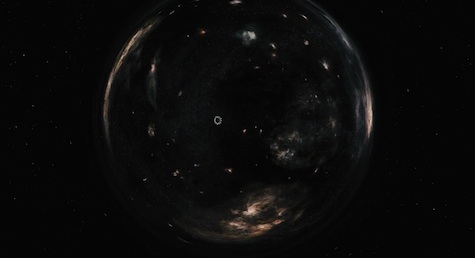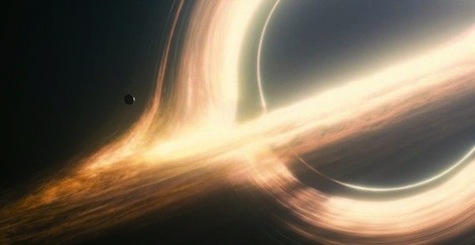With just a few weeks left until the release of Interstellar (a.k.a. this year’s Gravity), director Christopher Nolan and the cast sat down with The Hollywood Reporter for a lengthy feature on the film’s development. One thing we learned was that, like Gravity, Interstellar is not 100% scientifically accurate. But rather than have Neil deGrasse Tyson call that out once the movie has hit theaters, Nolan copped to it from the beginning.
A stickler for accuracy, Nolan brought in physicist Kip Thorne to consult on brother Jonathan Nolan’s screenplay (and the movie in general) in its early stages. But even as the latter two bounced ideas back and forth, Nolan explains, he still had to make the decision on which elements to stick to:
…Kip’s research into the mathematical possibility of wormholes, the fact they can exist, gives you a way that this could happen and was essential to the jumping-off point in the story. When I came to the project, [Kip] and Jonah had worked on a vast array of ideas involving a lot of the different things you’re talking about. And one of the most important parts of my job was to say: “OK, we can’t use all of this. I’m going to have to choose.”
Some might see this as dumbing down the material, but Nolan makes it sound like he was streamlining:
It was, choose a couple of things that I think as a director I can get across to the audience and hopefully not lose them.
Nolan needn’t worry. Audiences can handle wormholes and the creative storytelling associated with them—just look at Farscape.

Similarly, the actors were given some science to work with, even if they didn’t understand the big-picture stuff; Jessica Chastain joked about trying to wrap her head around a fake equation her character pores over. Nolan went on to add that Thorne took his various questions and would come back (usually in a couple days’ time) with a solution to sell the truncated science he was putting forward.
Ultimately, Interstellar sounds like it’s still going to challenge audiences intellectually (and physically, with its 167-minute running time). When asked whether a film needs to be understood, Nolan answered, “I don’t think it does,” citing 2001: A Space Odyssey (which just received a new trailer) as an example.
He also spoke more about his impetus for making what some are calling his most personal film:
[Our] generation has grown up with far too little interaction with the idea of leaving this planet, with the idea of getting out and exploring our place in the solar system and then the galaxy and then the universe. In making it seem attainable, you think about it very differently. Your perspective immediately starts to change. You have to start wrestling with the idea of scale, with the idea of these vast distances, these enormous planets, what a wormhole would look like, what a black hole would be like. You have to start examining these things as practical possibilities. It all becomes much more tactile. Which is incredibly exciting.
Interstellar comes to theaters November 7.
Photos: Legendary Pictures










